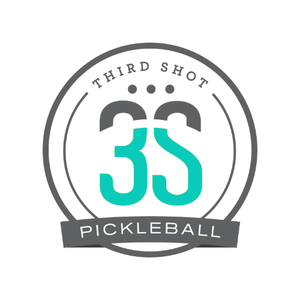"He paid very little attention to the most important shots in pickleball -- the third shot drop and dinking".
This was an anonymous comment that was sent to me after a well-known pickleball player (who also does some coaching) observed one of my private lessons. I had made a video featuring a woman who was playing pickleball for just the second time. In her early 40s, fit and athletic, my student was eager to get involved in the pickleball scene at our local YMCA.
And the commenter was correct. Other than a few minutes of dinking as part of the warm up, there wasn't much of the "soft game" that comprised our lesson. The third shot drop was only introduced after 40 minutes (!) as a way of combatting strong volleyers (this is important. We will return to it later) but it wasn't held up as the "right" shot to play or the best choice. It was one of three options; the others being a lob or drive.
The commenter's dismay at my failure to focus on these two shots was not surprising to me. There is an unfortunate amount of tunnel vision when it comes to the third shot drop and dinking that even afflicts some (not all) of the people who earn a living by coaching. But do you know why I didn't spend much time on these two shots?
Because she was a beginner and would be playing with beginners.
Let me explain. The conventional wisdom is that players should start with "the basics" or "fundamentals". I agree with this. The trouble is "basics" are often assumed to be dinking and third shot drops. I think this is a mistake. If you watch high-level players online or in person, you'll no doubt see exciting rallies that have all four players at the net, hitting beautiful angles and soft shots that just barely clear the net and force the opponent to hit up. Elite pickleball is special because of the patience and skill needed to send and receive slow balls that are precisely placed.
I love watching that kind of action too. I've made a number of videos featuring the technique and tactics related to these shots. Both serve the same purpose: when you are facing opponents who are strong at the net, a dink or a drop forces them to make contact with the ball below net level. And hitting upward limits their ability to hit it hard while keeping the ball in play. Dinking and drops are both fantastic tools to neutralize good net players. So why did I spend so little time on it with my student?
Because she was a beginner and would be playing with beginners.
Next time you are at the pickleball courts, take a few minutes to watch some starting or novice players. Or if you prefer, I googled "pickleball 3.0" and this was the first video that appeared. Watch how often the players get into a dinking rally. Almost never.
My student and the people she would play with are about this level. So if I had spent my lesson working on my student's dinking skills, she would be very unlikely to get to use them when she played the next day. She would have spent her time, money and effort working on something that she could almost never use "in real life" at this stage of her pickleball career. I would have forced her to work on something that, for her, right now, was completely useless. I wonder how satisfied she would be with that lesson?
The Real Most Important Shots (for beginning players).
Since third shot drops are rare in starting pickleball (and often aren't needed because the opponent's volleys are not yet well developed enough to demand a drop), dinking rallies are scarce. But do you know what shots new players (and all of us) do hit every single point? A serve or a return of serve.
My lesson focused on how to start the point effectively and we looked at what constitutes a good serve (in play/deep/to a weakness e.g. backhand) and what makes for a quality return (in play/deep/with enough time to get to the net/to a weakness). We then worked on doing this in a consistent way and developing the technical skills needed to do so.
We made sure she understood the value of moving to the net after her return. And we practiced sending balls that would cause trouble for the opposition (another criticism I received was I worked on tactics with a new player).
Was my student a complete, well-rounded player after this? Of course not. Down the road she would need to develop a third shot drop to neutralize strong volleyers who would punish her for driving the ball or lobbing it. And she would need to learn how to dink effectively as she encountered players who used the drop against her. But that was a way off.
By focusing on how she started the point, my student was able to apply her new skills in a meaningful way next time she stepped on the court. She was able to pin her opponents behind the baseline and, when returning, pressure them by being at the net. She knew to hit returns to the weaker opponent and, when possible, to aim for backhands. She was able to play the game more thoughtfully and effectively after this one lesson. She developed skills she could actually use.
And as far as I'm concerned, that is my main job as a coach.
Mark Renneson is a pickleball coach and is the founder of Third Shot Sports. He has degrees in Education and Philosophy of Education. He is a 5.0 player who competes but he prefers to spend his time working with people excited to play better pickleball. Mark can be reached by email at mark@thirdshotsports.com.
